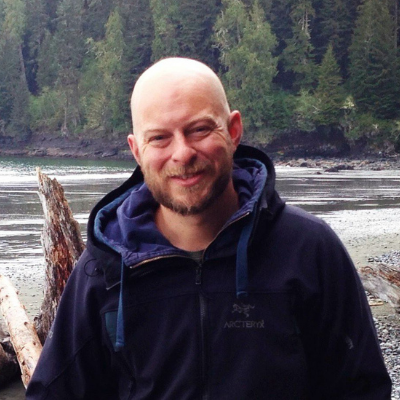
Research Interests
Microbiomics, Microorganisms, Molecular Biology
Research Focus Teams
TBA
Departments
Earth, Ocean & Atmospheric Sciences, Microbiology & Immunology
Contact
Email: sacrowe [at] mail.ubc.ca
Office Phone: 604–827–3827
Office number: 2457
Publications
Lab Website
Dr. Sean Crowe is a an Associate Professor in the Department of Microbiology and Immunology at UBC. He is a geochemist who couples classical and molecular biological tools to geochemical techniques to study the co-evolution of life and Earth surface chemistry. Dr. Crowe’s current interests are in modern nitrogen cycling, the evolution of atmospheric oxygen through the Precambrian, and the role of Fe-based photosynthesis in early biological production and the deposition banded iron formations. Dr. Crowe is holds a Canada Research Chair in Geomicrobiology.
The overarching goal of my research is to improve our capacity to predict and respond to global change by creating new knowledge of the earth system. Microorganisms and prokaryotes in particular have been the engines of biogeochemical cycles throughout Earth’s history. Eukaryotes rose to prominence with the evolution of land plants some 400 million years ago, and now humans are playing key roles in shaping fluxes of matter and energy at a global scale. Going forward, our survival as a species will be linked to our capacity to predict and manage our own interaction with the earth system. Qualitative and quantitative models that can describe biogeochemical cycles, reproduce past events, and predict future change are tools needed for managing human interaction with the earth. The information, or the ‘blueprint’, on how to run biogeochemical cycles is coded in the microbial DNA that is dispersed throughout the world’s oceans, soils, and the deep biosphere. How this information translates into networked, microbially-catalyzed geochemical reactions remains largely uncertain. The utility and performance, therefore, of current models of biogeochemical cycling are challenged by a lack of explicit definitions of the biological information carriers (eg. DNA, RNA, protein) that ultimately regulate and control biogeochemical cycles and their dynamics through time.
New gene-centric modeling approaches are beginning to incorporate genetic information into biogeochemical models, but even these models suffer from a lack of relevant ecophysiological knowledge with which to qualify and quantify the link between relevant processes and biological information carriers. My current research program focuses heavily on creating this knowledge using process rate measurements to acquire ecophysiological data in conjunction with molecular microbial studies that together can link the presence, abundance, and organization of specific biological molecules (DNA, RNA, protein) directly to rates of geochemical transformations. Such models help to reconstruct biogeochemical cycling in the past as constrained through the application of paleoproxies to the geologic record. This ‘ground truthing’, through application to past environments, gives confidence in predictions for future scenarios.Current research in my group focuses in particular on the biogeochemical cycling of nitrogen, iron, sulfur, phosphorus, and carbon in modern and past environments. We are working to fill gaps in our knowledge of these cycles by constraining the ecophysiology of anaerobic iron and sulfur oxidizing microorganisms, which are linked to the nitrogen cycle through their role in nitrate reduction. Likewise, we are working to delineate the role of dissimilatory nitrate reduction to ammonium as a ‘short-circuit’ that retains fixed nitrogen in anaerobic ecosystems and facilitates nitrogen recycling. Phosphorus is another nutrient of current interest and we are studying both phosphorus availability in lateritic soils and the flexibility of biology in its phosphorus requirements for growth. We are also working on enhancing the use of redox sensitive trace metals and their isotopes as paleoproxies, linking sedimentary signals to contemporary biogeochemical cycling. A diversity of other projects are ongoing in the group ranging from engineered solutions to contaminant management, microbial biomineralization, bacterial colonization of implant and prosthetic surfaces, microbiology of the deep subsurface, microbial roles in unconventional energy resources, and quaternary climate in the Indo-Pacific region.